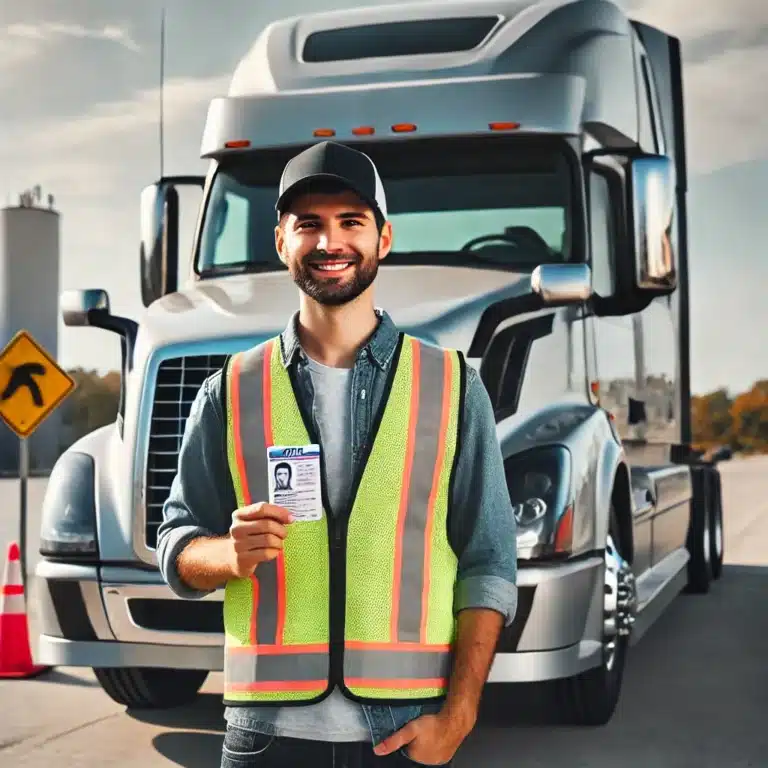How to Get a CDL: Step-by-Step Guide to Earning Your Commercial Driver’s License

Obtaining a Commercial Driver’s License (CDL) is a detailed process that opens the door to a variety of driving careers—from long-haul trucking to operating buses. The journey requires careful preparation, adherence to state and federal regulations, and a commitment to learning safe driving practices. Below is a comprehensive guide outlining the key steps to get your CDL.
1. Understand CDL Requirements
Age and Medical Standards
- Minimum Age: Generally, you must be at least 18 years old to drive within your state and 21 for interstate driving.
- Medical Certification: A valid Medical Examiner’s Certificate is required to ensure you meet the physical standards for operating commercial vehicles.
Residency and Legal Status
- Proof of Residency: You’ll need to provide documents that verify your state residency.
- Background Check: A clean driving record is essential, though some minor infractions might be acceptable depending on your state’s regulations.
Knowledge of Regulations
- Familiarize yourself with both state-specific and federal regulations regarding commercial driving. The Federal Motor Carrier Safety Administration (FMCSA) sets many of these standards.
2. Obtain a CDL Manual and Study
CDL Manual
- Where to Find It: Your state’s Department of Motor Vehicles (DMV) or equivalent agency provides a CDL manual that outlines all the rules, regulations, and guidelines you need to know.
- Topics Covered: These manuals cover topics such as safe driving practices, vehicle inspection procedures, and the specifics of different types of commercial vehicles.
Study and Practice Tests
- Self-Study: Use the CDL manual to study for your knowledge exam. There are also many online resources and practice tests available.
- Courses: Consider enrolling in a CDL preparation course if you prefer a structured learning environment.
3. Apply for a Commercial Learner’s Permit (CLP)
Application Process
- Written Test: To obtain your CLP, you must pass a written knowledge test based on your state’s CDL manual.
- Documentation: Provide all necessary documentation (proof of identity, residency, and medical certification).
- Permit Duration: Once issued, your CLP typically remains valid for a specific period, during which you can practice driving under the supervision of a licensed CDL holder.
Practice Requirements
- Use your CLP period to practice driving. Many states require you to log a certain number of practice hours or complete behind-the-wheel training before taking the skills test.
4. Enroll in a CDL Training Program
Choosing a School
- Accredited Programs: Look for training schools with a good track record and proper accreditation. Many employers prefer candidates who have completed a certified training program.
- Hands-On Experience: A good training program will offer behind-the-wheel experience that is crucial for building the skills necessary for safe commercial driving.
Cost and Financial Aid
- Training can be costly, so explore financial aid options or employer sponsorship programs that may be available.
5. Schedule and Pass the CDL Skills Test
Pre-Trip Inspection
- Purpose: The pre-trip inspection tests your knowledge of vehicle safety and maintenance.
- What to Expect: You’ll need to demonstrate how to check your vehicle’s critical systems, such as brakes, lights, and tires.
Basic Vehicle Control Skills Test
- Maneuvers: This test includes skills like backing up, turning in a confined space, and proper handling of the vehicle.
Road Test
- Real-World Driving: The road test assesses your ability to operate a commercial vehicle safely on public roads under various conditions.
- Evaluation: An examiner will evaluate your driving skills, adherence to traffic laws, and overall safety.
6. Obtain Endorsements (if needed)
Types of Endorsements
- Hazardous Materials (HazMat): Additional testing and background checks are required if you plan to transport hazardous materials.
- Passenger Transport: A passenger endorsement is necessary for those who wish to drive buses.
- Other Endorsements: Depending on the type of commercial driving you plan to do, there may be additional endorsements required for tank vehicles, doubles/triples, and more.
Additional Testing
- Endorsements often require separate written and/or skills tests. Check with your local DMV for specific requirements.
7. Final Steps and CDL Issuance
Review and Payment
- Once you have passed all required tests, submit any final documentation and fees to your state’s licensing agency.
Receive Your CDL
- After processing, you will be issued your Commercial Driver’s License, officially authorizing you to drive commercial vehicles.
Ongoing Compliance
- Continued Education: Stay updated on any changes in regulations and consider periodic refresher courses.
- Record Keeping: Maintain your driving record and ensure your medical certification remains current.
Conclusion
The path to obtaining a CDL requires careful planning, dedicated study, and practical training. By following these steps—understanding requirements, obtaining a learner’s permit, enrolling in training, and passing both the skills and knowledge tests—you are well on your way to a rewarding career in commercial driving. Always stay informed about any changes in regulations and continue to refine your skills even after receiving your CDL.
